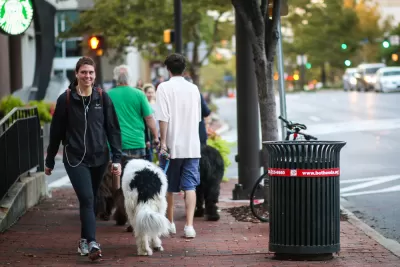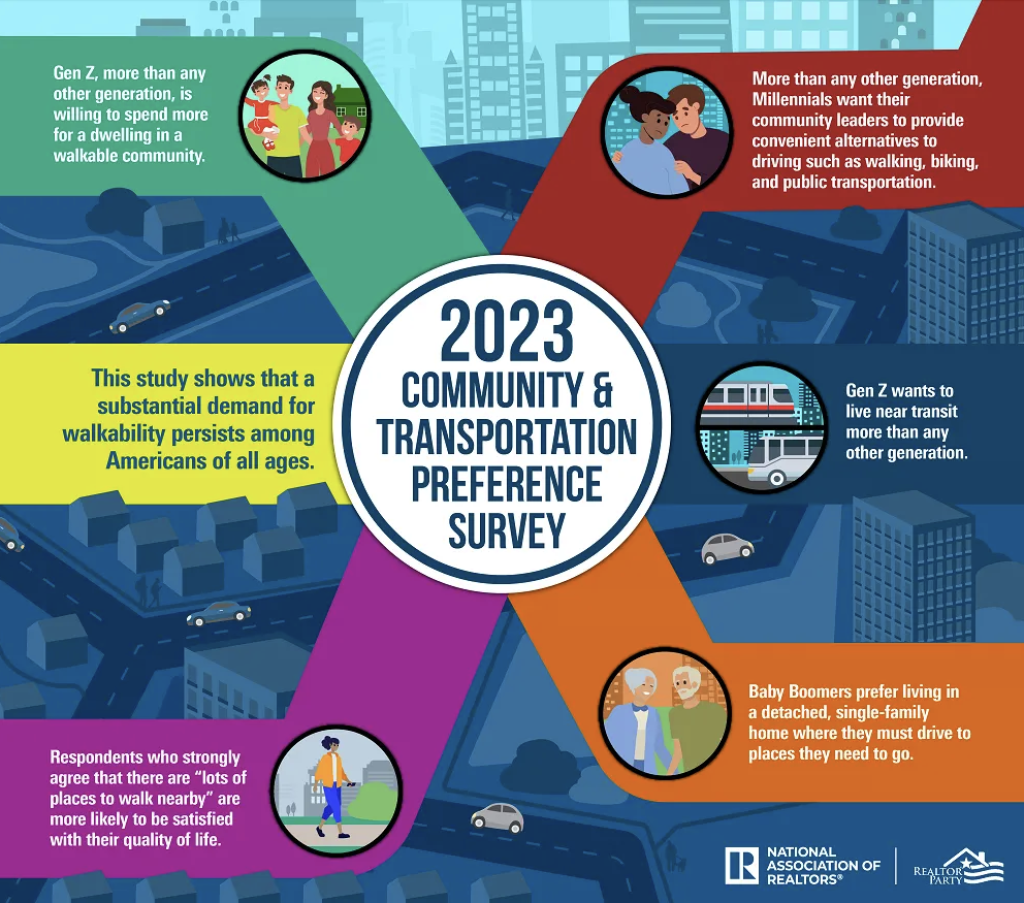Generation Z is leading a new push toward walkable communities, according to a recent survey by the National Association of Realtors.

American homebuyers have a strong preference for homes in walkable neighborhoods, according to the National Association of Realtors’ (NAR) recently published “2023 Community and Transportation Preferences Survey.”
“Seventy-nine percent of respondents rate walkability as “very” or “somewhat” important, and 78% say they’d pay more for a home in a walkable community, the survey shows,” according to an article by Realtor Magazine that shares details about the survey’s findings. “Young adults prioritize walkability the most, with 90% of Gen Z and millennial respondents indicating they’d pay more for a home in a walkable community; a third say they’d ‘pay a lot more.’”
The survey also debunks a common narrative that the pandemic revealed a preference for the automobile dependent neighborhoods of sprawl. “Walkability became more of a focus during the COVID-19 pandemic, but demand has only grown since,” according to the article. Still, despite those reported preferences, domestic migration trends show population declining in many of the country’s more urban areas, with more people arriving on the outskirts of metropolitan areas.
More details about the survey and its findings are available at the NAR website.

FULL STORY: Survey: Buyers May Pay More to Live in Walkable Communities

Planetizen Federal Action Tracker
A weekly monitor of how Trump’s orders and actions are impacting planners and planning in America.

DARTSpace Platform Streamlines Dallas TOD Application Process
The Dallas transit agency hopes a shorter permitting timeline will boost transit-oriented development around rail stations.

Congressman Proposes Bill to Rename DC Metro “Trump Train”
The Make Autorail Great Again Act would withhold federal funding to the system until the Washington Metropolitan Area Transit Authority (WMATA), rebrands as the Washington Metropolitan Authority for Greater Access (WMAGA).

Supreme Court Ruling in Pipeline Case Guts Federal Environmental Law
The decision limits the scope of a federal law that mandates extensive environmental impact reviews of energy, infrastructure, and transportation projects.

Texas State Bills to Defund Dallas Transit Die
DART would have seen a 30% service cut, $230M annual losses had the bills survived.

Bikeshare for the Win: Team Pedals to London Cricket Match, Beats Rivals Stuck in Traffic
While their opponents sat in gridlock, England's national cricket team hopped Lime bikes, riding to a 3-0 victory.
Urban Design for Planners 1: Software Tools
This six-course series explores essential urban design concepts using open source software and equips planners with the tools they need to participate fully in the urban design process.
Planning for Universal Design
Learn the tools for implementing Universal Design in planning regulations.
Roanoke Valley-Alleghany Regional Commission
City of Mt Shasta
City of Camden Redevelopment Agency
City of Astoria
Transportation Research & Education Center (TREC) at Portland State University
US High Speed Rail Association
City of Camden Redevelopment Agency
Municipality of Princeton (NJ)





























